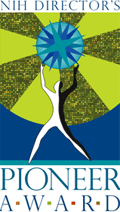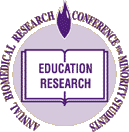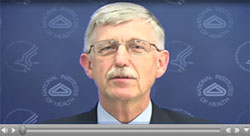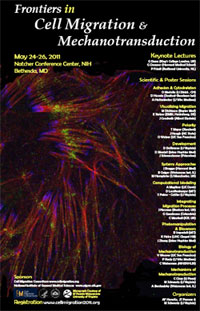In the decade since NIGMS began supporting human embryonic stem cell (hESC) research, the field has made substantial strides, including the development of methods to generate induced pluripotent stem cells (iPSC). As part of our ongoing commitment to basic research into the fundamental properties of pluripotent cells, we recently hosted our fourth biennial workshop for NIGMS grantees working in this research area. The 63 participants presented their latest research findings, exchanged ideas and discussed possibilities for collaboration.
The talks and posters focused on state-of-the-art hESC and iPSC research in four broad areas: pluripotency and self-renewal, technological approaches, differentiation mechanisms, and epigenetics and reprogramming. Several presentations highlighted significant advances in our understanding of the molecular complexes and signaling networks that control pluripotency and the transition to the differentiated state. As in previous workshops, it was exciting to see all the progress that has been made in the past two years.
The final session was on future directions and challenges. It included a discussion of the current state of the field and raised the important question of the nature, extent and significance of differences between hESC and iPSC. Jamie Thomson of the University of Wisconsin-Madison reminded everyone that these two types of pluripotent cells are remarkably similar and that differences may reflect genetic differences in the original cells and/or differences arising during growth in tissue culture.
The meeting concluded with a lively discussion that highlighted the participants’ opinions on the technical challenges, resource needs and key biological questions that will drive the field in the coming years. For more on this, read the workshop summary.



 NIH recently conducted an evaluation of the short-term outcome of the NIH Director Pioneer’s Award program, which started in 2004 and is managed by NIGMS. The report was positive and confirmed that the research supported by the program truly has been pioneering, not only in pursuing highly creative and often unconventional approaches but also in leading to additional “high-risk, high-reward” programs at NIH and other funding agencies.
NIH recently conducted an evaluation of the short-term outcome of the NIH Director Pioneer’s Award program, which started in 2004 and is managed by NIGMS. The report was positive and confirmed that the research supported by the program truly has been pioneering, not only in pursuing highly creative and often unconventional approaches but also in leading to additional “high-risk, high-reward” programs at NIH and other funding agencies.

 and the
and the 

 Last week, NIGMS hosted the Frontiers in Cell Migration and Mechanotransduction meeting. It brought together an impressive group of scientists working at many levels, from molecules to cells, tissues and organs.
Last week, NIGMS hosted the Frontiers in Cell Migration and Mechanotransduction meeting. It brought together an impressive group of scientists working at many levels, from molecules to cells, tissues and organs.